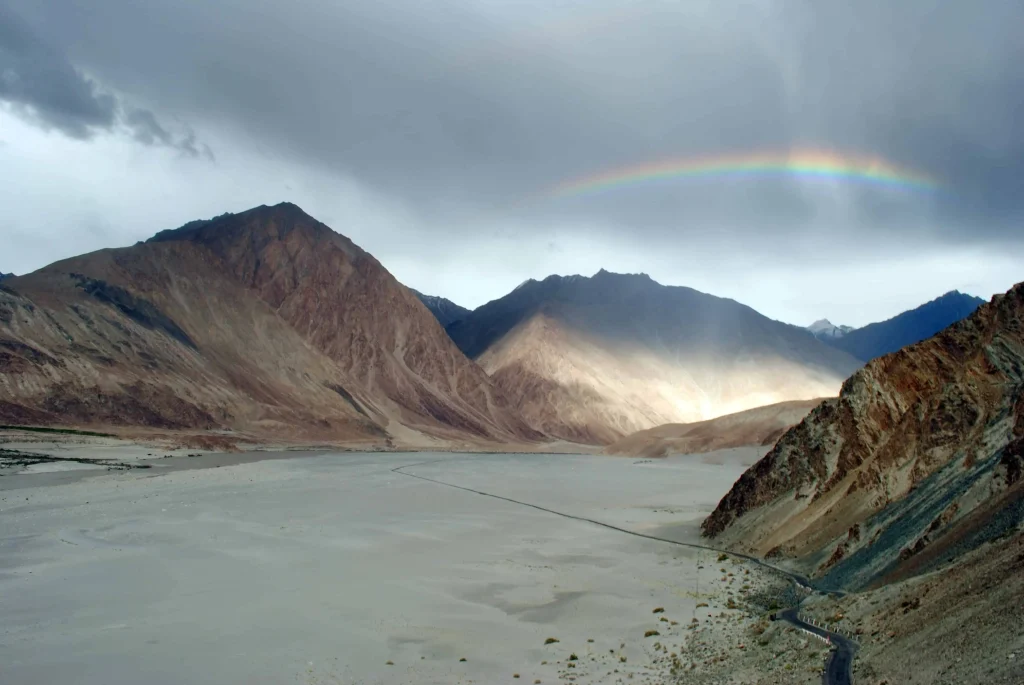Exploring the Beauty of Kargil: Discover the Best Time to Visit
Kargil in Ladakh, India, is known for its stunning scenery and unique cultural legacy. It is located in the tranquil lap of the Himalayas. The best time to visit Kargil is often from late May until early October. This time of year marks the start of the summer season in the region, with temperatures ranging from 8°C to 20°C. The snow from the severe winters melts away during these months, revealing clear roads and the genuine splendour of the rocky country. Summer is good for outdoor activities like trekking in Kargil expeditions, and sightseeing because the weather is reasonably consistent, with less chance of rain or snow upsetting trip plans.
Visitors should avoid visiting Kargil during the winter months of November to February, when temperatures drop below freezing, often as low as -20°C to -30°C, and heavy snowfall frequently clogs roads, making travel difficult and unsafe. Due to snow accumulation, the Zojila Pass, one of the primary roads to Kargil, is regularly closed. For those interested in the region’s culture, the Ladakh Festival in September is a bright time to visit, displaying local traditions, music, and dance, albeit just before the colder months when the region begins preparing for the long, harsh winter.
Here Are The Best Time To Visit Kargil
1. Kargil in Summer (March - June)

Summer in Kargil is a sight to behold. March to June are perfect for visiting the region since the weather ranges from 8°C to 20°C. The snow from the winter months has melted, revealing Kargil’s rough topography and magnificent scenery. This is an excellent time to engage in outdoor activities such as trekking, mountaineering, and sightseeing. The beautiful sky creates great picture opportunities, while the local flora and animals are in full bloom, adding to the region’s natural splendour. Overall, Kargil in the summer is a must-see location for anyone wishing to immerse themselves in the tranquil splendour of the Himalayas.
2. Kargil in Winter (October - February)

Kargil’s winter season begins in October and lasts until February. This is the best time to visit the region because temperatures can dip to as low as -20°C to -30°C, making travel difficult. Heavy snowfall during this period frequently blocks roads, making travel difficult and dangerous. One of the main highways to Kargil, the Zojila Pass, is frequently closed owing to snow accumulation. Winter in Kargil has its appeal for those who can tolerate the cold, as the snow-covered landscape is breathtaking. If you plan on going during this period, you should bring warm clothing and equipment.
3. Kargil in Monsoon (July - September)

From July to September, Kargil has a brief spell of monsoon. Although the rainfall is less than in other parts of India at this time of year, it nevertheless makes the roadways slippery and treacherous. Landslides are common, and travel can be hazardous. During the monsoon season, the region comes alive with lush foliage and brilliant colours, making it a stunning sight to see. If you plan on visiting Kargil during the monsoon, prepare suitable rain gear and check weather forecasts ahead of time.
Conclusion
the greatest places to visit Kargil are from late May to early October, when the weather is moderate and the snow has melted, revealing the region’s magnificent rocky scenery. Summer is an ideal season for outdoor activities such as hiking, mountaineering, and sightseeing. Visitors should, on the other hand, avoid the winter season from November to February, when temperatures drop below freezing and heavy snowfall makes travel difficult and dangerous. The monsoon season, which lasts from July to September, is a magnificent time to explore Kargil but be wary of landslides and slick roads. Finally, when to visit Kargil is determined by personal choices and interests.
Here you can check our Kargil Tour Packages
People also ask about Best time to visit Kargil
The warmest month of the year is July, with an average temperature of 23.3 °C. In January, the average temperature is -8.8 °C. It is the coldest average temperature of the year.
From November to April, Kargil is surrounded by snow.
The historical location has an “Amar Jawan Jyoti” to honour the soldiers who died in Operation Vijay during the Kargil War. The conflict Memorial includes a theatre, a gift shop, a display of seized weaponry from the conflict, and letters sent by Indian troops to their families.
Drass is a town in Jammu and Kashmir’s Kargil district. It is the world’s second coldest inhabited location. It is 3230 meters above sea level. It is often referred to as the “Gateway to Ladakh.
By Bus. From March to June, the National Highway (NH 1) that connects Srinagar to Leh and cuts through the Kargil route is open to travellers. The route between Kargil and Drass, on the other hand, is open all year.
Mulbekh Monastery, Drass War Memorial, Kargil Main Street, Suru Basin, Trekking, and Lamayuru Monastery are the prominent attractions in Kargil.
The road from Kargil to Srinagar is largely nice, with a few bumps over the Zori La pass. The roads are only open during the summer months and are maintained and fixed before the way is open to the public for travel.
Hunderman, an inconspicuous village tucked among the jagged peaks of Kargil, is home to a one-of-a-kind ‘Museum of Memories’ that recounts the lives of border families.
